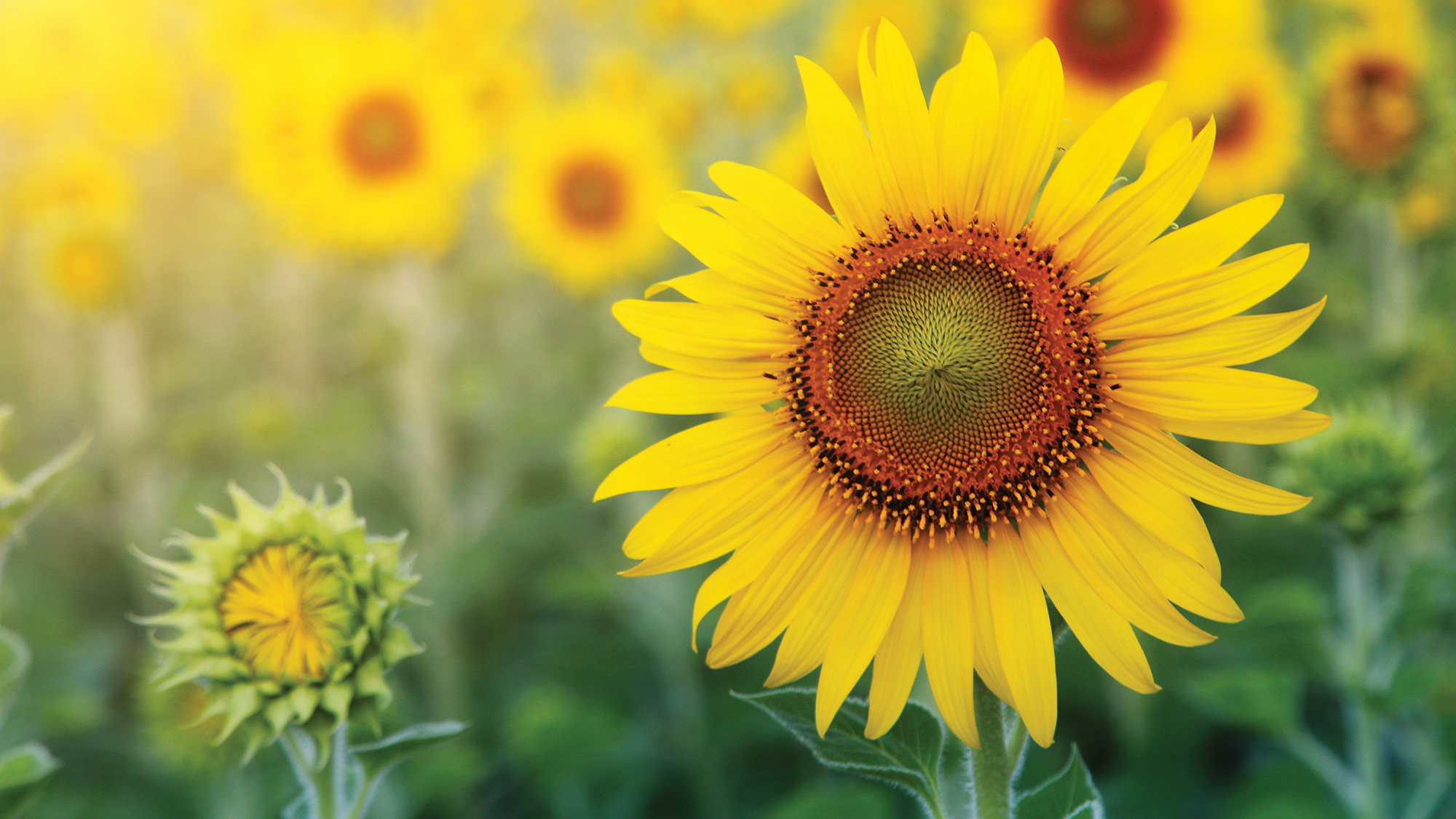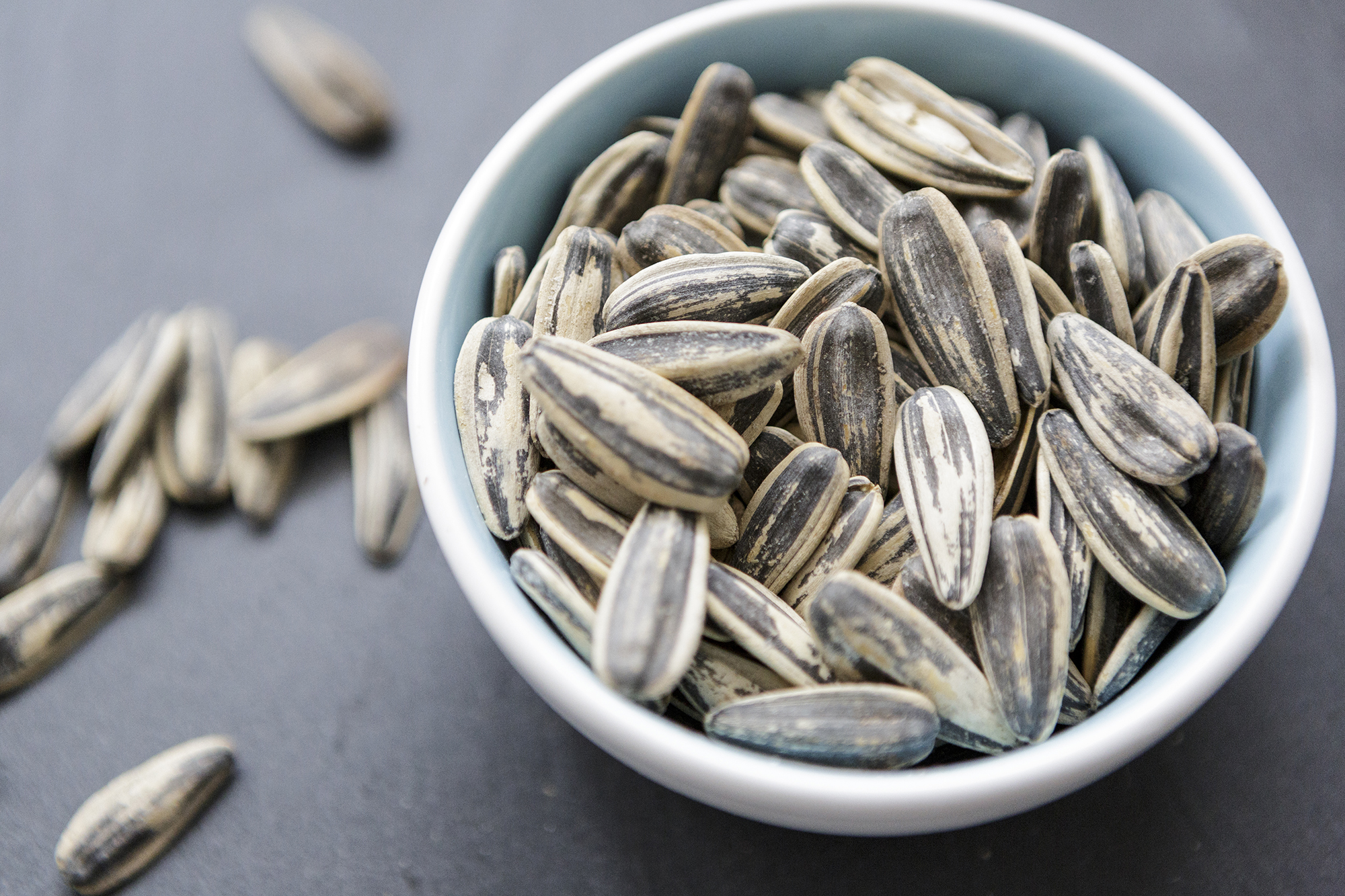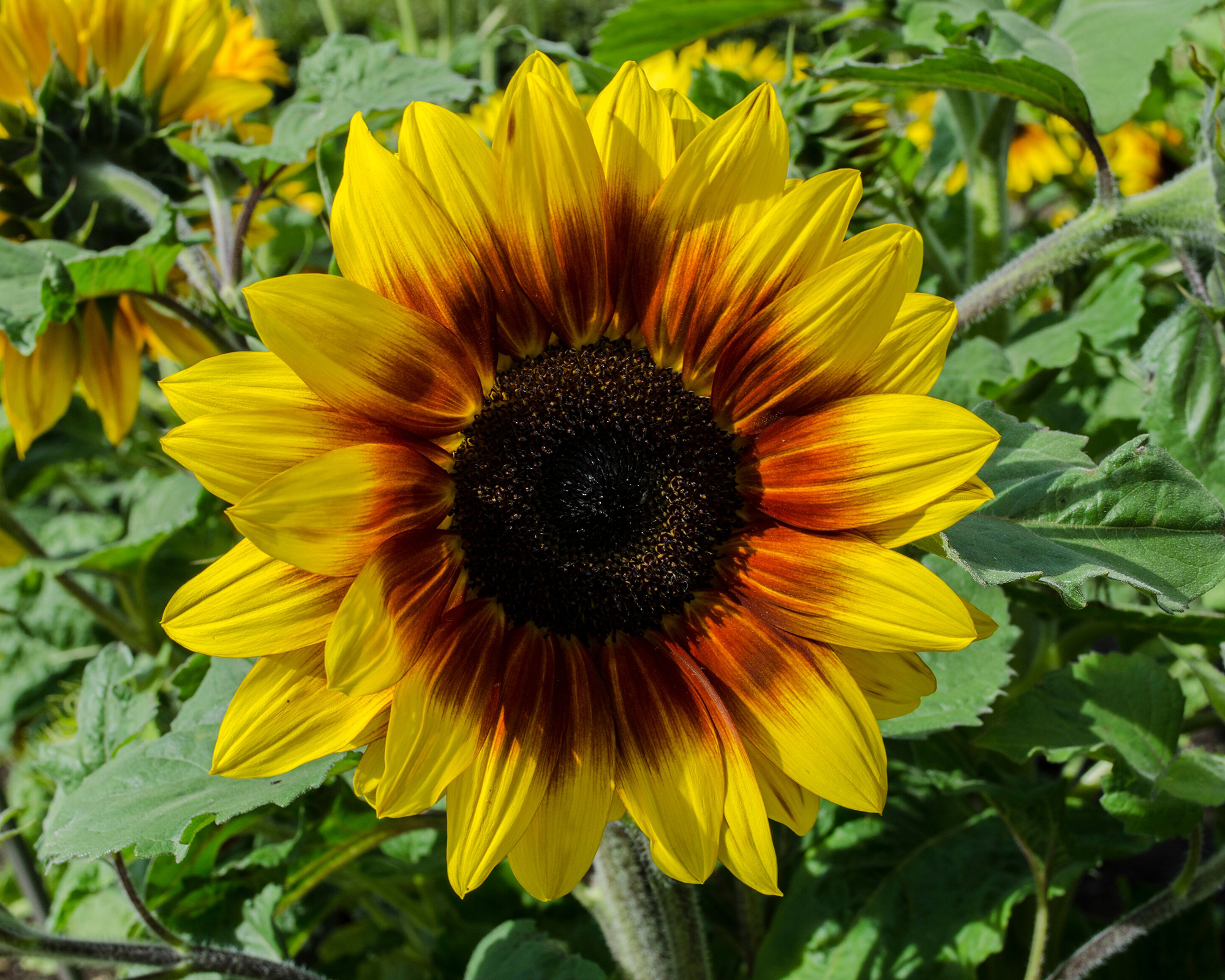How to harvest sunflower seeds – for planting, eating and feeding wildlife
Discover how to harvest sunflower seeds to enjoy these iconic summer blooms to their fullest


Learning how to harvest sunflower seeds is a practical and enjoyable skill to master, whether you plan to snack on your homegrown bounty or plant new seeds for next year.
If you have learned how to grow sunflowers for the purpose of harvesting the seeds, then there are a few key rules you must follow.
However, as they are among the most attractive summer flowers – and vital flowers that attract bees – it’s important to enjoy them in your garden too.
‘Nothing says summer like the bright sunny face of a sunflower, which makes them one of the most popular genera of flowers to grow in any garden,’ says Gail Pabst from the National Garden Bureau.
Collecting seeds extends the enjoyment of these garden icons, and has numerous benefits.
‘You can harvest sunflower seeds to eat them as well as save them to plant in your garden next year. You can also use them to feed birds and other wildlife through the winter,’ says Amy Andrychowicz, gardening author, and founder of Get Busy Gardening.
‘It’s easy, frugal, and you can do it again year after year, so you’ll never have to buy the seeds again.’
Make sure you know when to plant sunflower seeds in your area to give you the best chance of success.
How to harvest sunflower seeds for planting or food
‘Regardless of whether you plan to harvest sunflower seeds to eat or to save them for planting, the steps for gathering them are the same,’ says Andrychowicz.
Follow this step-by-step expert guide on how to harvest sunflower seeds and, come the end of summer, you will have a bounty of seeds to plant or enjoy.

1. Choose the right sunflower for harvesting
Not all types of sunflower are ideal for harvesting sunflower seeds – especially if you want to use the seeds for food.
‘There are pollenless and pollinating types of sunflowers. Pollenless varieties are generally grown for cut flowers only, while pollinating sunflower seeds produce oil seeds and striped seeds,’ explains Lonnie Decker, farm manager for Blake Farms in Michigan.
‘Oil seeds are best used for bird seed or to produce sunflower oil. While oil seeds can be eaten, people usually eat the striped sunflower seeds.’
‘To harvest sunflower seeds, it is best to grow sunflowers that have been bred to produce large, edible seeds that are great for snacking,’ adds Pabst. ‘Good varieties include Feed the Birds, Mongolian Giant, Skyscraper, Super Snack Mix, and Titan.’
2. Nurture your sunflowers
Get your sunflowers off to a good start by planting them in fertile soil. Keep on top of weeds and pests such as snails and slugs, which could ruin your crop.
‘Sunflowers will grow in any soil type – direct sow seed into the ground starting late May through to the end of July,’ says Decker. ‘Plant 1-2 inches deep into the ground, a foot apart. They are one of easiest things to grow and produce beautiful flowers.’
If harvesting sunflower seeds for eating, you may need to protect the seeds from birds. ‘Tie a paper bag over the blooms in the garden, or you can cut the stalks before they are ready and hang them indoors to dry,’ says Pabst.
You could alternatively cover them with mesh.
3. How do I know when sunflower seeds are ready to harvest?
With some trial and error, it’s easy to spot when to harvest sunflower seeds.
‘You’ll know your sunflower seeds are ready to harvest once the flower has turned brown, the seeds are plump, and they come out easily when you wiggle them,’ says Andrychowicz.
If you want to be absolutely certain that the seeds are ready, follow this advice from Decker:
‘Tie a paper bag over the flower head, cut the stem 12-18 inches below the head, and hang the stem upside down for at least five days,’ she says.
‘When seeds start falling out of the head easily, they are ready for storing or eating.’

4. How to collect sunflower seeds
Once the seeds are ready, you will need to remove the sunflowers from the garden so you can begin harvesting them.
‘The easiest way to collect the seeds is to cut the flower off the stem, and bring it inside,’ says Andrychowicz.
Firstly you need to remove the chaff (spent inner flowers and outer petals). ‘The chaff may drop off on its own, or you might need to pick or rub it off to expose the seeds.’
Mature sunflower seeds will come out of the flower easily when you firmly rub your fingers over them – simply place a bowl beneath to capture them as they drop.
‘If the seeds don’t fall out easily, that means they need more time to mature,’ adds Andrychowicz. ‘In that case, allow the flower to dry out longer, and check on them again in a few days.’
5. How to dry sunflower seeds
If you want to save your sunflower seeds for later use, then you’ll need to dry them.
‘When collecting seed the most important thing to remember is the dryer the better. If your seed is not dry enough you run the risk of your seeds becoming moldy,’ says Decker.
Once you have harvested the seeds, rinse them in a colander and then pick out the debris to clean them.
‘Line a shallow box or container with newspapers and paper towels, and place the seeds in a single layer on the paper to dry,' says Pabst. 'Be sure to leave space between each seed, and let them dry completely – this can take one or two days.’
When the seeds are ready, store them in an airtight container in a cool, dry spot.
6. How do I save sunflower seeds for next year?
One of the key benefits of learning how to harvest sunflower seeds is to save them for next year's planting. To do this, you will need to dry them out and store them properly.
‘Once they are completely dry, place them in a paper bag or jar, and store them in a dark, cool, and dry location until you're ready to plant them in the spring,’ says Andrychowicz.
Make sure you label the seeds so you remember what they are.
Alternatively, if you wish to eat the seeds and improve their shelf-life by several months, you can salt and roast them.
‘If you suspect pests, freezing your sunflower seeds will kill off any eggs that may be lurking in the shells,’ says Kate Russell, gardening author and owner of The Daily Garden. ‘Sunflower seeds stored in the refrigerator or freezer are good for a year.’
7. How to remove sunflower seed shells
Before eating sunflower seeds, it's best to remove the shells, as they are indigestible. If just grazing, you can remove them as you eat; otherwise, you can process the whole batch in one go.
First, you'll need to break up the shell. You can do this with a pestle and mortar, by putting the seeds in a plastic bag and rolling over them with a rolling pin, or using an electric mixer.
Once you have broken up the outer shell, place the seeds into a large bowl and fill with water. Stir well to help separate the seeds and shells.
The husks should rise to the top – use a slotted spoon to remove them.
Finally, rinse your sunflower seeds in a sieve or colander.
Sign up to the Homes & Gardens newsletter
Design expertise in your inbox – from inspiring decorating ideas and beautiful celebrity homes to practical gardening advice and shopping round-ups.

Melanie has worked in homes and gardens media for two decades. Having previously served as Editor on Period Living magazine, and worked on Homes & Gardens, Gardening Etc, Real Homes, and Homebuilding & Renovating, she is now focusing on her passion for gardening as a Senior Editor at Gardening Know How. As a keen home grower, Melanie has experimented with pretty much every type of vegetable at some point – with mixed results. Often it is the simplest things that elude you, which may explain why she just can't seem to master zucchinis.
-
 Zooey Deschanel and Jonathan Scott's breakfast nook is an innovative, effective use of kitchen space – it turns a 'dead area' into a cafe-style corner
Zooey Deschanel and Jonathan Scott's breakfast nook is an innovative, effective use of kitchen space – it turns a 'dead area' into a cafe-style cornerJonathan and Zooey have situated an eccentric yet elegant dining area in what may have been an otherwise underused corner
By Hannah Ziegler Published
-
 6 things you should never throw in the trash – and what to do for safe disposal instead
6 things you should never throw in the trash – and what to do for safe disposal insteadFrom batteries to space heaters, experts reveal what not to throw
By Andy van Terheyden Published